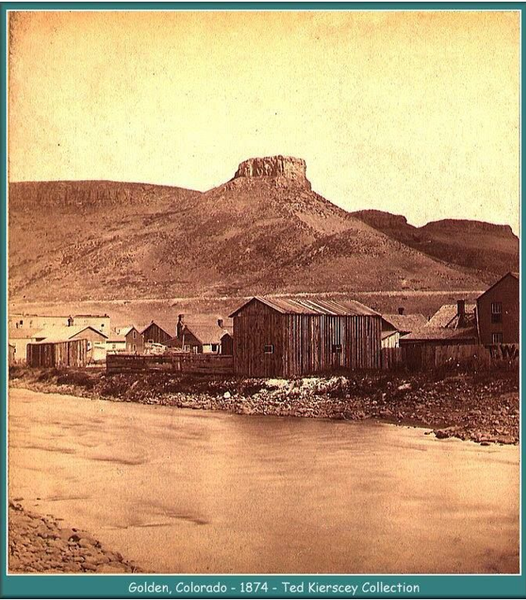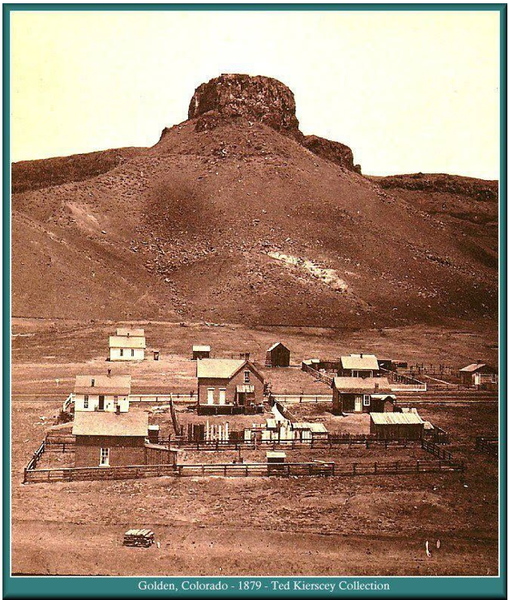Formed more than 60 million years ago by ancient lava flows, the mesa is capped with hard basalt that has resisted erosion, giving it its distinctive profile. In the late 19th century, geology students from the Colorado School of Mines, following local professor Arthur Lakes, explored the mesa in search of fossils, unearthing the first Tyrannosaurus rex tooth discovered in North America in 1874.
Its most prominent feature, Castle Rock, became a local attraction in the early 1900s. In 1906, a café opened on its summit, followed by a dance hall and even a funicular railway that carried visitors to the top. For a brief period, Castle Rock was a lively destination for picnics and dances, drawing Golden residents and tourists seeking views of the plains and mountains.

By the 1920s, the venue took on a starkly different character. As the Ku Klux Klan rose to political prominence in Colorado, it appropriated Castle Rock for initiation ceremonies and rallies. On September 27, 1923, a 50-foot wooden cross was erected and burned at the summit, its glow visible for miles across the plains. These events symbolized the Klan’s strength during the early 1920s, but their prominence faded within a few years amid scandal and political decline. In August 1927, the dance pavilion on Castle Rock was destroyed in a fire widely believed to be arson, and the mountaintop resort was never rebuilt, ending its era as a social destination.
After the resort’s demise, South Table Mountain saw limited development. In 1935, the Works Progress Administration built the Colorado Amphitheater on the southern slope for National Guard training at Camp George West, but it was later abandoned—partly due to the abundance of rattlesnakes that frequent the area in summer months. Decades later, a proposal to quarry much of the mesa sparked a long legal battle. Attorney Carl F. Eiberger Jr. spearheaded the effort to stop the project, devoting 24 years and more than 10,000 pro bono hours to protect the mountain. After 98 consecutive public hearings, Eiberger prevailed, and the mesa was preserved as open space. The northeast point of the mountain now bears his name: Carl’s Point, a tribute to his role in saving this landmark.

Today, South Table Mountain serves as a public recreation area managed largely by Jefferson County Open Space, offering trails for hiking, biking, and wildlife viewing. Visitors often see deer, birds of prey, and—especially in warm months—rattlesnakes sunning themselves along the trails. Portions of the mesa are used by the Colorado State Patrol and the National Renewable Energy Laboratory for research and training exercises. While Castle Rock itself remains private property and closed to visitors, the surrounding land is open for public enjoyment. Standing above Golden, South Table Mountain continues to reflect a layered history—shaped by natural forces, early tourism, social conflict, and ultimately, preservation for future generations.
 Wayne howell
Wayne howell

Add a comment
Log in to add comments.This was great Wayne. Fun and interesting. Thanks for sharing!
Art Hogling
Thank you. I lead hikes on South Table and learned and share the interesting history of the mesa.
Thanks, Wayne!
Thanks for leading hikes here and the research and article, Wayne.